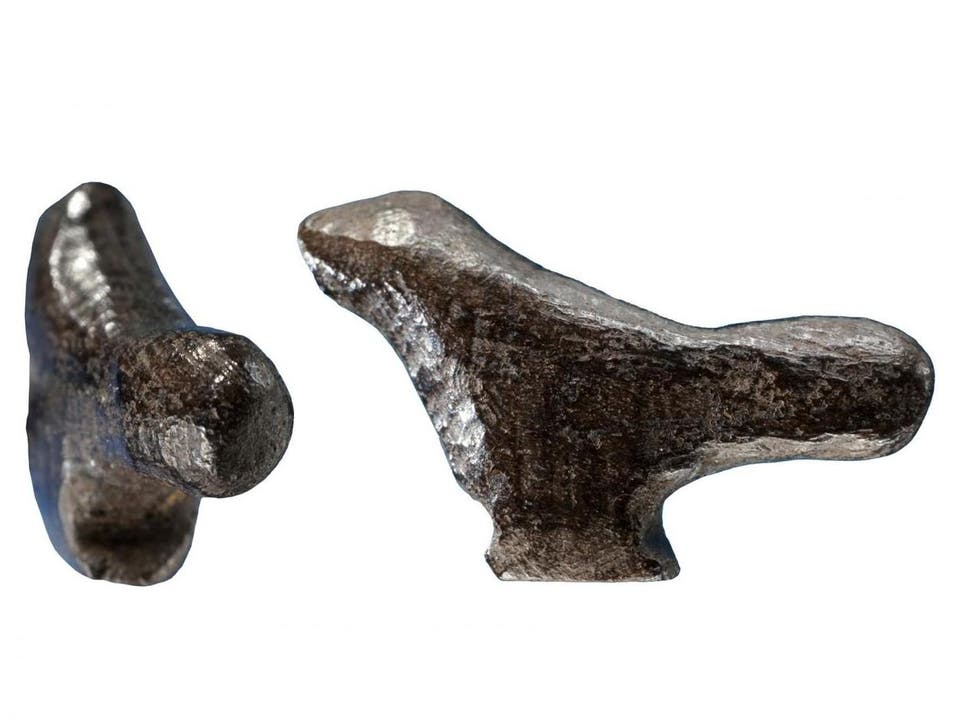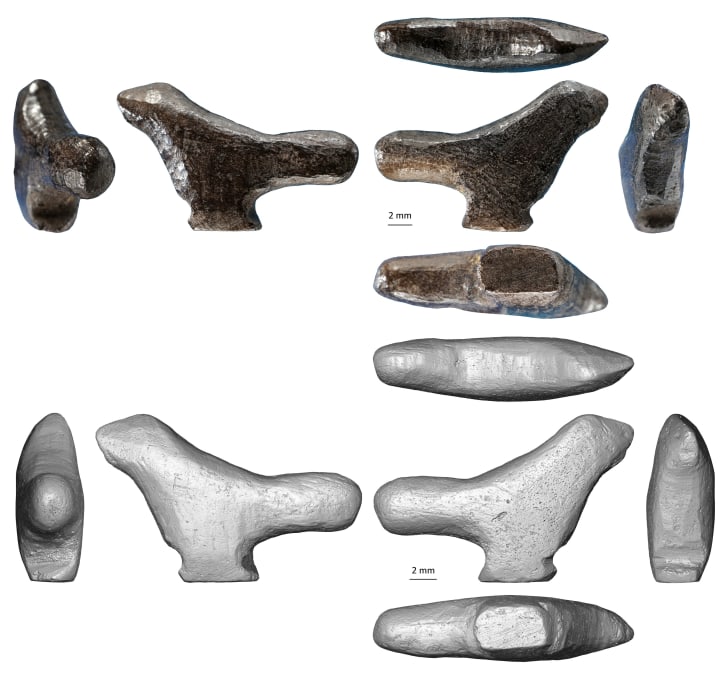The songbird statuette changes the existing view of the craftsmanship of prehistoric Asia
Categories: Finds and rescue research abroad , Nálezy nejenom s detektorem v Číně

A 13,500-year-old bird figurine found in China is the oldest carved three-dimensional animal figurine in East Asia. It is made of miniature-sized bone and was discovered in Lingjing, Henan province, central China. It pushes the boundary of sculpture of this kind by a full 8,500 years.
Seven of the site's eleven layers contain archaeological material. The oldest layer is 118,000 years old, while the youngest is from the Bronze Age. However, the bird figurine has not been found in its original stratigraphic context. It was lying in the rubbish heap of the fifth layer, where it was thrown away when a well was dug here in 1958. Most of this layer was destroyed during the excavation. Fortunately, the "trash" pile remained intact, so archaeologists were able to examine it in 2008 and 2013. Among other objects, they discovered the aforementioned bird figurine.
The figurine measures just 15 mm in length and 5 mm in width. The distinctly short head and neck, rounded body, small legs and long tail suggest that it is a songbird. The researchers were able to estimate the age of the carving by dating the burnt bone samples that were found with the bird, including a sample that was carved using the same technique.
University of Bordeaux researcher Francesco D'Errico said the bird is "exceptionally" well preserved, allowing scientists to study various carving methods such as grooving, scraping and polishing to make the different parts of the statue. "Our observations indicate that the artist knew very well which technique was more suitable for carving the different parts of the animal.
It is also interesting to note that the sculpture is not a fully realistic representation of the bird. In fact, the figure's tail is too large - but this is by design, so that the work stands upright. "Without this trick, the bird would have tipped over on its head," D'Errico explained, adding that the find confirms that it is not just a random carving experiment. Experts believe that such intricate techniques stem from an artistic tradition that must have begun much earlier.
"This discovery pushes back the production of bird statues in Chinese art by more than 8,500 years. The figurine differs technologically and stylistically from other examples found in Western Europe and Siberia. It identifies an indigenous artistic tradition - and may be the missing link that traces the origins of Chineseof Chinese sculpture back to the Paleolithic," research leader Professor Zhanyang Li of Shandong University told the media.
Roman Nemec Sources.: independent.co.uk, cnn.com, newscientist.com

The article is included in categories: